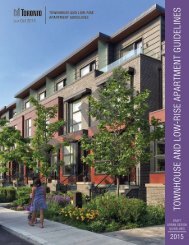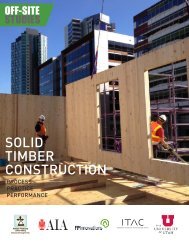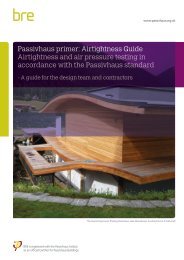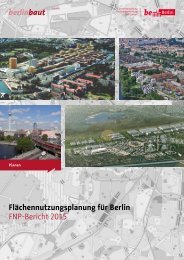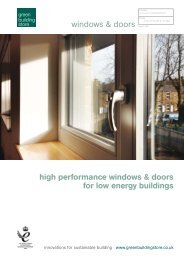TRUE URBAN SPIRIT
b008379b
b008379b
You also want an ePaper? Increase the reach of your titles
YUMPU automatically turns print PDFs into web optimized ePapers that Google loves.
2 VIENNA: BUILDING THE FUTURE<br />
HIGH-QUALITY<br />
<strong>URBAN</strong>ITY<br />
FOR ALL PARTS<br />
OF THE CITY<br />
The fact that a condensed, compact city can be extremely attractive<br />
is not only evidenced by many Gründerzeit quarters and historic<br />
city centres, but also by new development projects in Vienna<br />
and other cities. For this reason, urban development areas need<br />
to present adequate structures that respond to the demands of<br />
a growing city, allow for the sparing consumption of land and<br />
resources and permit mixed-use concepts. This generates the frequency<br />
and demand needed by retailers and functioning groundfloor<br />
zones and results in comprehensive, walkable local supply<br />
in a city of short distances. Sufficiently dimensioned, high-quality<br />
green and open spaces are obviously part of these new developments.<br />
Moreover, new (urban) technologies are employed as central<br />
instruments of resource conservation.<br />
Of course, this strategy calls for sophisticated planning procedures,<br />
respect for local specifics and the integration of new quarters<br />
into the surrounding cityscape. In addition, instruments, legal<br />
regulations and target systems are oriented towards the needs<br />
of a prospering, modern and international metropolitan region.<br />
BUILDING THE CITY<br />
Urban mixed-use approaches – i. e. the combination of<br />
housing with other types of use −, high-quality den -<br />
s ities and low resource consumption are becoming key<br />
criteria for construction projects and ventures. Future<br />
urban expansion projects for development axes along<br />
high-level public transport corridors should therefore<br />
predominantly reflect densities of a minimum net<br />
floorspace ratio ( NFSR) of 1.5; in the environs of<br />
high-level public transport, the minimum NFSR should<br />
be 2.5. With especially positive location factors, higher<br />
densities are possible on a case-by-case basis in<br />
some areas in the context of high-rise developments<br />
( High-rise Concept). However, all projects must be<br />
assessed in context with existing local conditions (e. g.<br />
transition zones to existing, less concentrated or lower<br />
built structures with stable types of use or construction<br />
projects adjoining historic villages cores).<br />
Implementation of settlement types that allow for the<br />
development of compact, mixed, walkable and cyclingfriend<br />
ly neighbourhoods (even at the urban periphery) with<br />
well-integrated supply facilities and family-oriented housing<br />
types while taking account of the principles of gender mainstreaming.<br />
“Development of requirement profiles for public space”<br />
for all urban expansion measures (taking account of groundfloor<br />
zones).<br />
Identification and adaptation of regulations and objectives<br />
that can be influenced by the City of Vienna to allow for the<br />
comprehensive implementation of high-quality densities.<br />
Implementation of innovative mobility concepts together<br />
with project developers.<br />
Definition of minimum ground-floor ceiling heights in<br />
suitable locations to support the development of mixed-use<br />
structures in keeping with Gründerzeit principles.<br />
Intensified information and participation of citizens and<br />
abutters on the basis of the principles embodied in the participation<br />
manual “Praxisbuch Partizipation”, which are in<br />
their turn condensed and concretised in the Master Plan for<br />
Participatory Urban Development.<br />
Development, testing and monitoring of the effects of new<br />
technologies for buildings, energy and information networks,<br />
storage and control systems as well as smart mobility in<br />
selected pilot areas (e. g. in the context of Aspern Smart City<br />
Research GmbH – ASCR).<br />
54



